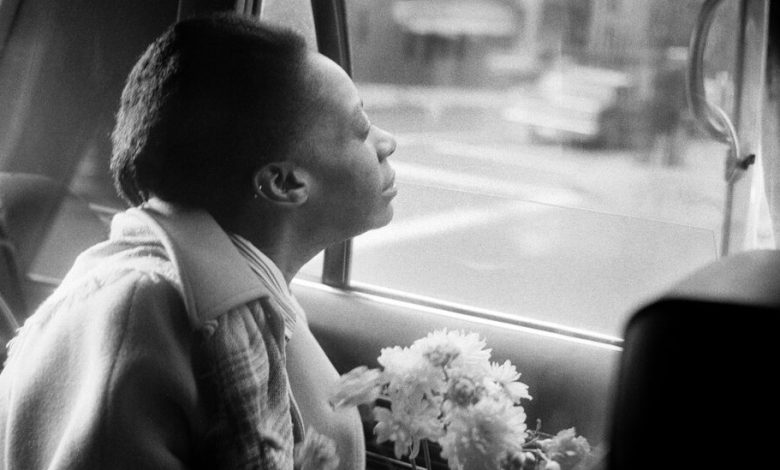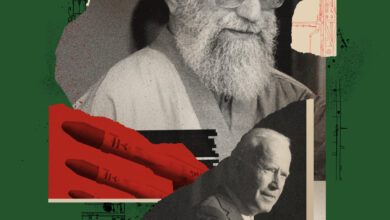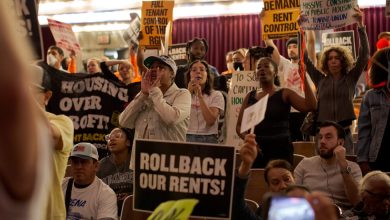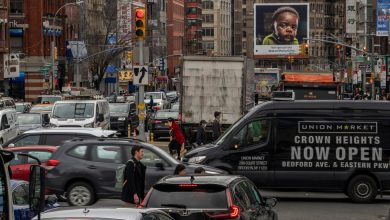35 Years of Efforts to Address Mental Illness on New York Streets

Mayor Eric Adams defended his plan to involuntarily hospitalize mentally ill homeless people on Thursday, saying that he was determined to lead the city into “uncharted waters where others were afraid to go” and tackle a social ill that “everyone else punted on.”
The mayor’s program — under which the police, medics and clinicians will have people deemed unable to care for themselves brought to hospitals — may be ambitious. But it is hardly unprecedented.
Every few years, going back to the mayoralty of Ed Koch, at least, there has been a push to get emotionally disturbed people off the streets, often in response to a violent attack that horrifies the city.
The problem, said Shelly Nortz, deputy executive director for policy for the Coalition for the Homeless, is that “they haven’t built enough of the right places for them to go.” The mental health system turned away decades ago from long-term institutionalization in psychiatric hospitals, but has never come up with an adequate replacement, she said.
Some programs designed to fill the breach are either limited or flawed. An audit by the state comptroller, Thomas DiNapoli, released on Thursday, found that the city was not making use of one of the tools it already has — the ability to place people with mental illness in specialized shelters. The audit found that the city had failed to place a quarter of homeless shelter residents with serious mental health issues in a mental-health shelter.
Without more and better housing options and wider availability of outpatient mental health treatment, Ms. Nortz and others say, Mr. Adams’s effort will have difficulty succeeding.
Here is a brief history of those efforts:
1987:
The Koch administration rolls out a program to remove severely mentally ill homeless people from Manhattan streets and forcibly provide them with medical and psychiatric care. One of them is Joyce Brown, better known as Billie Boggs, whose partly successful battle not to be hospitalized against her will makes her a celebrity.
1993
After a man who had drifted in and out of homeless shelters bludgeons an 80-year-old woman to death, the state says it will send mental health workers into shelters to identify residents who are dangerous enough to be removed to state mental hospitals.
1994
The state launches a program called Assertive Community Treatment to “break an expensive and debilitating cycle of hospitalization, release and relapse,” as a news article puts it, by delivering medical services directly to homeless people even if they are on the street. The program still exists but has a waiting list of 800 people, Crain’s reported this week.
1999
Andrew Goldstein, a man suffering from schizophrenia, pushes Kendra Webdale in front of a train, leading to Kendra’s Law, which allows courts to order outpatient treatment for people considered a danger to themselves or others.
A few days after Kendra’s Law goes into effect, a 27-year-old woman is attacked with a brick. The headline in The Daily News screams “Get the Violent Crazies Off Our Streets.” Mayor Rudolph W. Giuliani responds by declaring that homeless people have no right to sleep in the street, and his police commissioner says they will be arrested if they refuse shelter.
2015
The murder of a homeless shelter director prompts Mayor Bill de Blasio to start a program called NYC Safe to aggressively reach “the narrow population of New Yorkers with untreated serious mental illness who pose a concern for violent behavior.” At one point there are 73 people on its “high-risk” list. The next year, a judge rules that the city’s involuntary hospitalization of a man on the list is illegal.
The program also includes the creation of “Intensive Mobile Treatment” teams, similar to the state’s Assertive Community Treatment teams but more flexible. The city expanded the program last year, but it too has a wait list.





